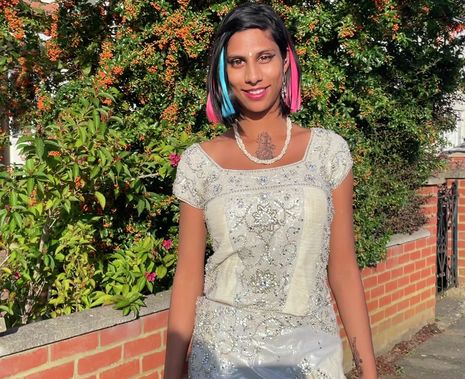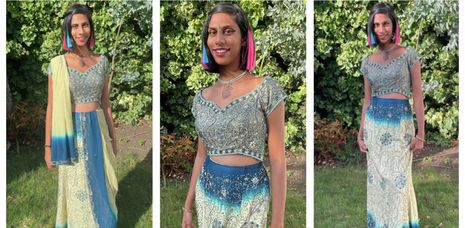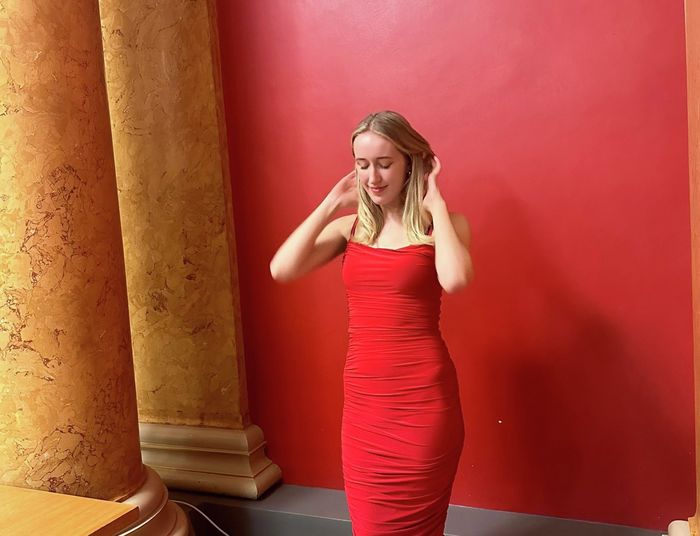South Asian fashion fits into Cambridge
Ria Patel interviews students who wear their cultural fashion with pride

When I was younger, like many others, I had a complicated relationship with my Indian cultural identity. I would complain that my traditional clothing was itchy and uncomfortable, refusing to wear it or only doing so reluctantly. Pervasive ‘white’ standards of beauty led me to internalize that people of white ethnicity were automatically prettier than a brown girl like me. I believed that non-ethnic standards of fashion were the ideal – even if that meant rejecting my own culture.
Even within South Asian culture, I doubted whether cultural fashion was for me. The significance of many traditional South Asian clothes is linked to certain religious events, leaving me with the sense that I had to fully subscribe to these beliefs to appreciate the clothes. As I’ve grown up, I’ve been able to find a sense of liberation through the realization that I could take pride in my culture without being religious. Looking back on my former dismissive attitude, I feel sad at the thought of my lack of confidence in my Indian Gujarati culture and identity.

More recently, I’ve been able to connect to cultural identity through Indian fashion. This connection is not just about the clothing, but also a way to battle the effects of society’s quiet erasure of such cultural identities. I could not help but draw a metaphorical link to the Khadi cloth associated with the Swadeshi movement led by Mahatma Gandhi. Just as he used Khadi as a means for national identity in India and resistance to colonial rule, I see my connection and embrace of cultural fashion as a way to assert and take pride in my identity and heritage! I particularly like salwar, lehenga and chaniya choli outfits and admired a Patan saree (a traditional saree native to Gujarat) that my grandmother had worn for my mother’s wedding. There is something experimental and exciting about incorporating cultural elements into my everyday fashion.
“Even within South Asian culture, I doubted whether cultural fashion was for me”
One of the students I spoke to, Natasha Macbeth, combines her everyday fashion with desi jewellery, enjoying the jangling of her bangles as she walks finding “this slightly bizarre sensation brings me comfort.” As someone with mixed white/Indian ethnicity, this makes her feel more stable in her desi identity. Her indo-western fashion choices are not merely aesthetically motivated, but “more a message to myself, a way of carrying my brown heritage.” She also feels more confident wearing traditional South Asian clothes because she has made friends with other South Asian women in Cambridge. She wore a saree gifted to her by her grandmother to a formal with some of these friends, describing how South Asian fashion “has become a way of connecting with our personal identities but also with one another … a way to connect with a wider community.”

Luckshika Sutharsan, committee member of the Brown Girl Link Up Society, shares an encouraging message about how you don’t have to be nervous about wearing your cultural fashion. Luckshika recalls being afraid that in Cambridge she would have to change and “keep [her] culture on the down low.” However, she says “I haven’t found that to be the case at all.” Having a supportive community helped her feel confident wearing pottus (bindis) in the city. Despite feeling the presence of Cambridge’s ‘Sidgewick style’ fashion standards, this has not limited her. She has “no problem walking through town in a saree (except maybe for the cold!).” Luckshika also highlights how sarees are “such a staple of South Asian fashion”, and that you can wear it everywhere. Similarly, For Natasha, her favourite part of South Asian fashion is “its flexibility and precision” as learning each way to drape a saree, for example, “takes time and effort.” While she once found this tedious, she has come to appreciate the versatility of these garments, even finding pleating “quite a calming and loving ritual.” She finds “a sense of life and endurance” to these traditional garments that is “missing in my Western clothes.”
“I loved the kaleidoscope of colours across the clothes and all the shimmering adornments”
The Cambridge South Asian community has encouraged me to wear cultural fashion with pride. At the Cambridge Uni Brown Girl Link Up Sangeet at the end of Easter term 2023, I was immersed in an array of outfits, which were both visually beautiful and made me feel a strong sense of community and shared appreciation. I loved the kaleidoscope of colours across the clothes and all the shimmering adornments. Having such a supportive community helped me feel more confident and take pride in expressing my own identity through fashion, which I find so beautiful.
Shees Noor, another student I spoke to, loves South Asian fashion for its “vibrant colours and intricate embroidery,” with Kashmiri tilla work suits being a particular favourite. Her favourite type of South Asian fashion is worn during traditional events organised by the different uni societies or during festive celebrations.
Take this as a call to bring your best cultural fashion with you to Cambridge – you’ll have many chances to wear them! According to Shees, it is “a time to dress up and showcase the richness of our culture.”
 Comment / Plastic pubs: the problem with Cambridge alehouses 5 January 2026
Comment / Plastic pubs: the problem with Cambridge alehouses 5 January 2026 News / Cambridge businesses concerned infrastructure delays will hurt growth5 January 2026
News / Cambridge businesses concerned infrastructure delays will hurt growth5 January 2026 News / New movement ‘Cambridge is Chopped’ launched to fight against hate crime7 January 2026
News / New movement ‘Cambridge is Chopped’ launched to fight against hate crime7 January 2026 News / AstraZeneca sues for £32 million over faulty construction at Cambridge Campus31 December 2025
News / AstraZeneca sues for £32 million over faulty construction at Cambridge Campus31 December 2025 Interviews / You don’t need to peak at Cambridge, says Robin Harding31 December 2025
Interviews / You don’t need to peak at Cambridge, says Robin Harding31 December 2025










